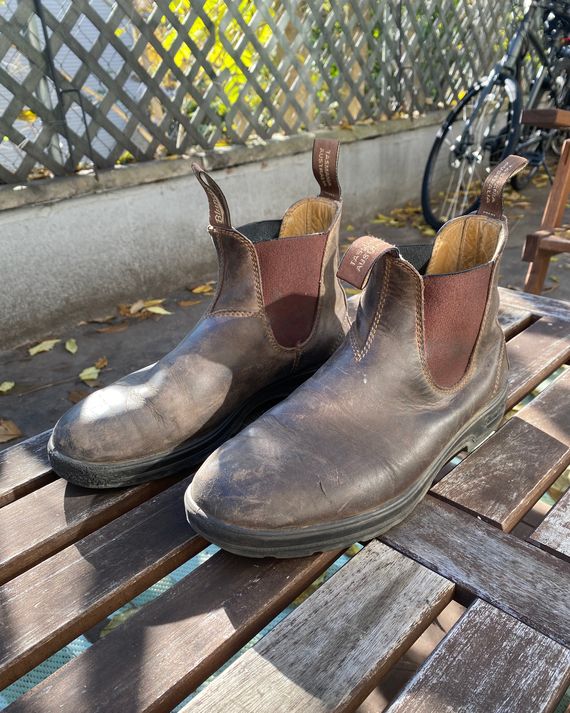
When I was living in Boston years ago, I was looking for ways to prepare my newly purchased Blundstones for a New England winter. I knew I needed to protect the leather from not just rain and snow, but the road grime that comes with all the slush. My mission was redemptive: I didn’t treat my Clarks Desert Boots properly, and their leather uppers cracked and deteriorated after a few years of use. This time would be different.
I knew about the obvious methods for leather waterproofing, like various leather salves and creams, but I was a broke journalist at the time and was looking for the ultimate budget option. My research led me to a video in which a farmer explains how to waterproof leather boots with the wax from a toilet ring — the kind that plumbers use when installing a toilet bowl. The biggest draw: The entire process promised to cost less than two dollars. At first I was skeptical. But then I did more digging and found another video of the same process. So I decided to give it a try.
The farmer’s process is similar to other methods of waterproofing. Clean your boots and brush away any dirt or debris on the leather and seams. Heat up the leather by gently blowing with a heat gun or hair dryer. (I prefer to just let them sit in the sun for a few minutes.) Next, scrape out the wax from the wax ring with a cloth rag, and lather it onto the leather, switching between heating lightly (too much direct heat could dry out the leather) and working in the wax with a cloth rag in a circular motion. Once the boots have cooled down, buff them with the same cloth rag.
When I first did this process, I expected the wax to not be easily spreadable, but in reality, it was softer than it looked and a little sticky — I used the hair dryer to make it more pliable. Shortly after, I took them for a test drive on my snowy street in Allston. I sunk my foot into a frozen puddle of slush, and when it emerged, I noticed big chunks of slush beading off the toe box, the way snow slides off the hood of a car. My feet were bone-dry.


Toilet wax rings are made of slack wax, a mixture of paraffin wax (which is used to make candles) and petroleum. Some people claim that petroleum can dry out leather and make it crack, while others say that it’s been used for generations without issue. I haven’t seen anything definitive from a reliable source, but for what it’s worth, this much more expensive and highly rated Pecard leather dressing contains petroleum, and I personally haven’t noticed any deterioration to my boots.
The wax truly seals out water from entering my boot, just like a wax gasket keeps water from leaking from the connection between the toilet and the sewer pipe. My Blundstones also appear visibly darker post-wax, and that is true of other boots I’ve waxed, too. But they return to their original color as the wax wears off. (And while the wax works great on smooth leather, I wouldn’t apply it to suede or nubuck.) I’ve found that my boots need a new coat after three or so months of frequent wear.


I’ve been doing this every winter since I got my Blundstones five years ago. It’s not just the cost of this process that’s appealing to me — one commenter in a hunting forum I came across pointed out that a can of Sno-Seal, a much more popular waterproofing treatment, is just $7, after all — it’s the ritual of pulling out the wax ring, the hair dryer, and tending to my Blundstones every winter that is gratifying. That, and being able to say that I found my waterproofing solution in the plumbing aisle of Home Depot.
The Strategist is designed to surface the most useful, expert recommendations for things to buy across the vast e-commerce landscape. Some of our latest conquests include the best acne treatments, rolling luggage, pillows for side sleepers, natural anxiety remedies, and bath towels. We update links when possible, but note that deals can expire and all prices are subject to change.







